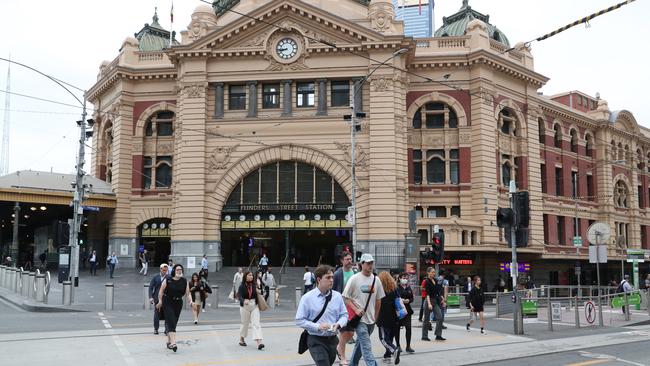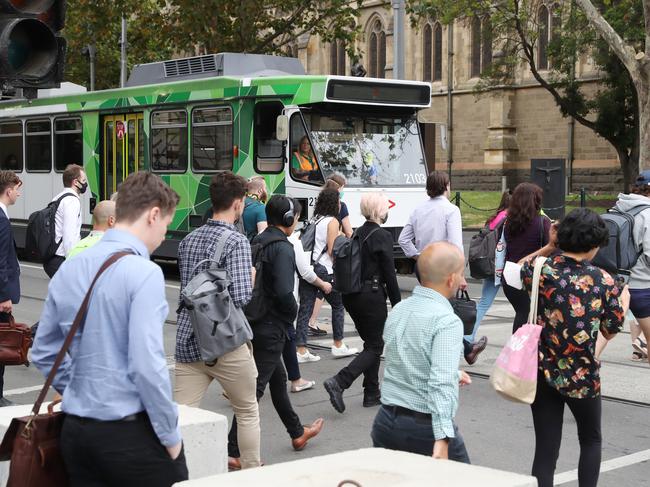Property Council of Australia data shows Melbourne CBD buildings less than half full
There are calls to get more city workers back at their desks after “concerning” data reveals how we are faring compared to other state capitals.

Victoria
Don't miss out on the headlines from Victoria. Followed categories will be added to My News.
Melbourne is the only state capital with an office occupancy rate of less than 50 per cent, as the number of city workers returning to their desks continues to lag behind Sydney.
New occupancy data from the Property Council of Australia has revealed that for the month of February, buildings in the CBD were still less than half full – at just 47 per cent capacity.
The figures have prompted calls for a renewed push to get city workers back at their desks.
Sydney last month enjoyed an office occupancy rate of 61 per cent, while Perth and Adelaide continued to lead the nation with buildings more than 80 per cent full.

The only other city to fall short of the 50 per cent benchmark last month was Canberra, at 46 per cent.
In January – when most Victorians were off work enjoying summer break – just 28 per cent of the city’s office buildings were full.
During that same holiday period, Sydney’s onsite office worker population contributed to an occupancy rate of 49 per cent.
The latest data comes despite a recent City of Melbourne survey which found 88 per cent of respondents had attended their office workplace at least once in the previous week when surveyed in December.
Property Council of Australia Victorian Executive Director Cath Evans said it would be “concerning” if the city’s occupancy rate continued to remain below 50 per cent.
“While every other CBD metric is indicating Melbourne is a vibrant city, the 9 to 5 economy is still vital to our city’s health,” she told the Herald Sun.
“It’s important to consider that Melbourne competes nationally and internationally with peer cities like Sydney – but also Auckland and Singapore – the economic health of our CBD is a deciding factor for businesses looking for a place to establish offices.”
Ms Evans said it was “critically important” for the Andrews government to ensure its own three-day onsite mandate was heeded.
“Our consistent view is that it is critically important for the government to lead by example and ensure that the current three day a week policy is complied with across all parts of the public service,” she said.
“This would be a positive first step in bringing public sector workers back into the CBD and incentivising other organisations to follow suit.”
But on Thursday,
Premier Daniel Andrews said the business community needed to acknowledge that the Covid pandemic had changed work behaviours.
“Some things will not change back,” he said.
“While I see a Property Council survey, and they’re perfectly entitled to survey and have views, but the survey I’d be more focused on was the one that was released last year that showed if you forced people back to five days a week with feet under the desk, 50 per cent would look for a new job.
“At a time where people can’t find staff in just about every sector, we have to be mindful of that.”





